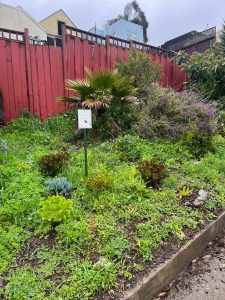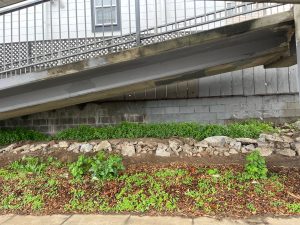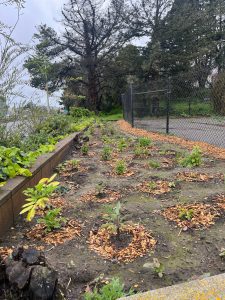
Glen Park is about to get greener, thanks to a grant that will buy 30 California native trees, 50 drought-resistant shrubs and numerous native grasses to beautify a stretch of land running between Arlington Street and San Jose Avenue.
The pedestrian portion of the land is known as the Arlington Path, which runs parallel to Arlington Street, overlooking San Jose Avenue and mirroring the Bernal Cut Path to the east.
Planted by volunteers, the greening is part of the Bernal Cut Restoration Project, which has steadily improved the two sides of the Bernal Cut – the portion of San Jose Avenue that runs from Randall Street to the I-280 freeway – since 2007.

The trees will transform a trash-strewn ivy-covered hillside along Arlington from Bosworth Street to Natick Street into an ecosystem of native plants that will sequester carbon dioxide from the 2,000 vehicles that pass by at rush hour on adjacent San Jose Avenue. The restored natural habitat will also mitigate approximately 3 million gallons of stormwater runoff and prevent erosion while providing an environment for birds, bees and beneficial microbes, said Sophie Constantinou, who applied for the Climate Action Plan Community Grant, worth $30,000 over two years.
Constantinou’s Glen Park partners include Glen Park Association Recording Secretary Carolyn White, who is planting the Arlington Path from the St. Mary Avenue steps up to Mateo Street, and Paul Muldown, Carol Hanson, Scott Ellerthorpe and Laura Parks who are transforming the 500-600 blocks of Arlington and are now working their way up Arlington toward Roanoke Street.
In addition to planting Coast Live Oak trees, the volunteers will add California grasses like Fescue, Blue Wild Rye and Purple Needlegrass.

Since 2007, the Bernal Cut Restoration Project has mobilized resident volunteers to activate pedestrian pathways and neglected spaces along Bernal Cut. Improvements include the installation of drought-resistant native trees and plants, safety lighting, educational signs, traffic calming measures that help pedestrians access pathways, and murals that celebrate neighborhood history and diversity.